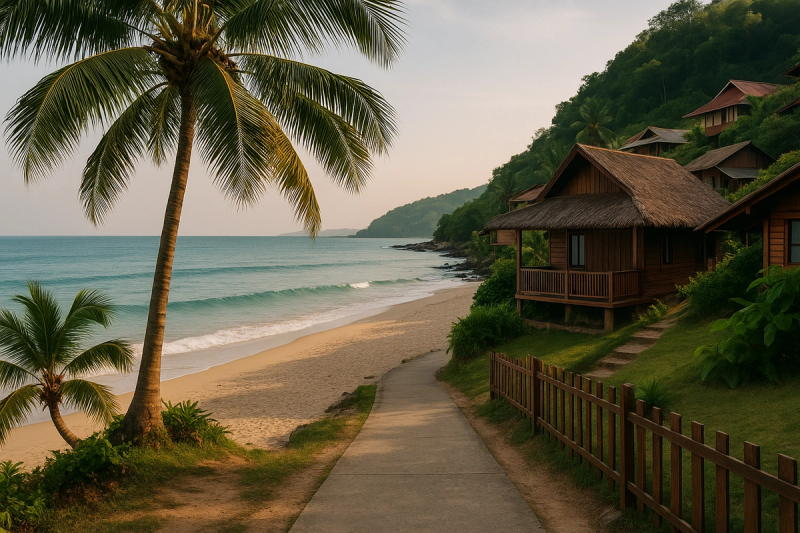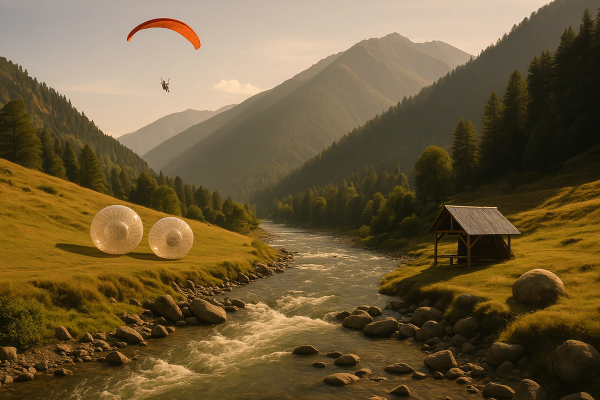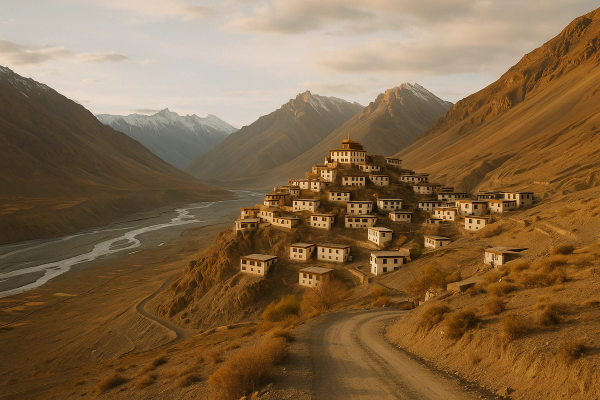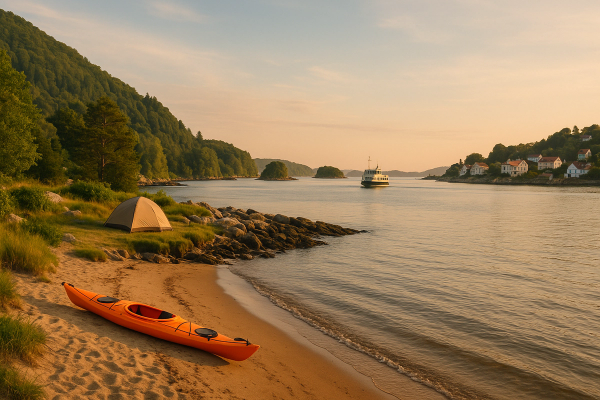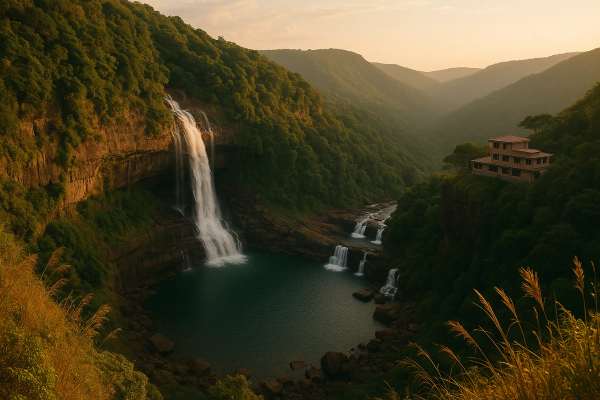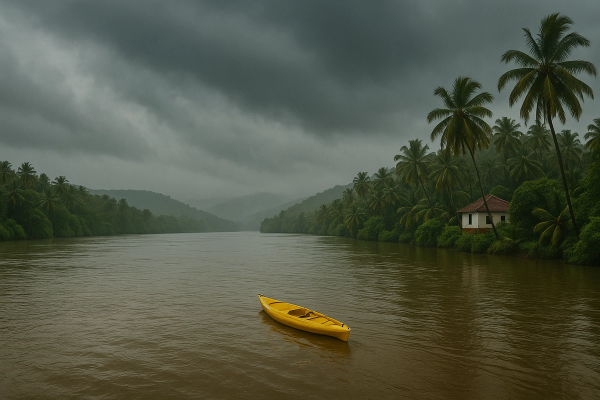Hornbill Festival Essentials: Tickets, Events, Homestays & Hacks — the desi lowdown, no filter#
So, Hornbill. The big daddy of festivals in the North East. Every time someone asks me about it, I kinda smile first, like an idiot, because just the thought of the drums and the smoke from pork grills and the cold wind hitting your face on the Kisama ridge... it does things. You know. It’s not just another “cultural fest”. It’s how Nagaland opens the door and says, come, see what we’re about — our tribes, our food, our fights and laughter, our swag. And ya, it’ll be crowded and messy and loud and some things won’t go as planned and you’ll be freezing at night if you underpacked — but trust me, you won’t forget it. Not even a little bit.¶
What Hornbill actually is (and why everyone raves about it)#
Held every December at the Naga Heritage Village in Kisama (about 12 km from Kohima), Hornbill is like a mega mashup of all 17+ Naga tribes celebrating their identity. Each tribe has its own morung — a traditional house — set up around a big arena. Through the day you get performances, war dances, indigenous games, chants that shake your bones, even fashion displays and craft demos. Evenings turn into music stages, night carnivals, and one long chow-down across streets both in Kohima and Dimapur. It’s clean-ish, well organized most days, deeply photogenic, and yeah, super friendly. People will pose, tell stories, argue about whose chutney is deadlier. Kids with feathered headgear will high-five you. Old uncles will offer zutho, their rice beer, and then laugh when you tear up from the raja mircha. The vibe is proud, warm, and kind of addictive.¶
Tickets, passes, and how not to waste half your day in a line#
Okay, money stuff. Entry to the Kisama heritage village is usually a very reasonable day ticket — typically around Rs 50 to Rs 100 per person for the main grounds. There’s often a separate camera fee too, sometimes posted at the gate, like Rs 50 to Rs 100 for DSLRs. If you’re going for specific evening concerts or the bigger music nights, those are ticketed separately and priced higher — think in the ballpark of Rs 500 to Rs 1500 depending on artist, section, and which day. Passes are sold at counters near the entry gates and in town pop-up kiosks. Some editions tie up with online ticket partners, some don’t — it changes, so check the Nagaland Tourism handles a week out. Pro tip that saves you time: reach Kisama by 9 am, buy your day pass for multiple days in one shot if they allow it, and keep small change. Card machines can act moody and UPI may lag when networks choke.¶
Daily flow looks sorta like this: cultural shows in the main arena late morning to early afternoon, then a break where everyone eats and wanders through morungs, and later the indigenous games, wrestling, musical showcases, fashion, whatever’s on the schedule. Evenings you’ll see the night carnival lighting up Kohima main road and sometimes Dimapur’s market stretch — stalls with bamboo cups, smoked meat, perilla-spiced veggies, honey, Naga shawls, tiny gigs around corners. Keep an eye on the official day plan they put out, because star items like Naga wrestling or special head-hunting war dance reenactments draw huge crowds and seats go quick. If there’s a VIP or guest of honor, expect frisking and delays, happens yaar.¶
Getting there, permits, and the not-so-fun-but-important logistics#
Closest airport is Dimapur. Flights connect via Kolkata and Guwahati mostly, with add-ons from Delhi, Bangalore, etc. The runway is small-ish, so delays are normal when the weather sulks. Dimapur to Kohima is roughly 3 to 4 hours by road on NH29, more if there’s festival traffic or roadwork. Shared taxis and Sumo services run all day — seats usually Rs 500 to Rs 700 — and you can hire the whole car if you’re a gang, budget around Rs 3500 to Rs 5000 depending on your bargaining and timing. Trains? Dimapur is the main station with decent connectivity. There’s also the newish Shokhuvi station on broad gauge for some regional trains. Once in Kohima, Kisama is a 20–30 minute drive if traffic behaves. During the festival, traffic behaves only sometimes. Leave early, please.¶
ILP — Inner Line Permit — is required for most Indian tourists entering Nagaland. Apply online on the official Nagaland ILP portal. Very doable if you don’t leave it for the last night, like a certain genius I know. Carry printed copies and IDs, because check posts will ask, and phone networks can be flaky. Foreign nationals typically don’t need the old Protected Area Permit anymore for the festival areas, but do check the latest advisory and keep your hotel bookings handy. General safety is good — the vibe is easy-going — but roads can be narrow, foggy, and slippery late evening. Don’t do hero driving in the hills at night unless you know the terrain, and even then, kya zarurat hai.¶
Where to stay: Kohima hotels vs village homestays vs tents#
If you want the full-throttle festival immersion, stay in the villages near Kisama — Kigwema, Jakhama, Viswema. You’ll wake up to church bells, a cold blue sky, and the smell of fires. You can walk or do a short hop to the venue. Homestays here usually run Rs 1500 to Rs 3500 per person per night during Hornbill, with breakfast or even two meals sometimes. Rooms are simple, clean, cozy when there’s a heater or thick quilts. Hot water is precious in the mornings, so be nice and stagger showers. In Kohima town, hotels and guesthouses range from Rs 3000 to Rs 8000 for decent mid-range, and premium places can go up. Pros: more eateries, pharmacies, ATMs, better chance of network. Cons: you’ll be driving in and out, and the night carnival right outside can be noisy. Tented camps are a thing too — Rs 1000 to Rs 2500 per person — proper mattresses, shared loos. Fun with friends, chilly at 2 am, take thermals. Peak demand means stuff sells out a month or two in advance. As of late 2024–2025, a lot of stays accept UPI deposits, but avoid paying full in advance to unknown numbers. WhatsApp confirmations are fine, but get a proper receipt or at least a message with dates, price, cancellation policy.¶
Small etiquette note because it matters: most homestays are family homes. There’s church on Sunday mornings, there are grandparents, there’s school homework going on. Keep noise down late night, ask before bringing alcohol, and don’t dump trash anywhere. Take your footwear off inside if they do. And if aunty offers you galho — Naga khichdi — don’t say no just because it looks plain. It’s comfort in a bowl, warms your bones when it’s 8 degrees and windy.¶
Food to hunt down: smoked pork, axone, and the sweetest sticky rice cakes#
The food stalls at Kisama are basically a mini-Nagaland food crawl. Try smoked pork with axone (fermented soybean), bamboo shoot curry, beef ribs, anishi (sun-dried yam leaf), lai with perilla seeds, wild mushrooms when in season, local chutneys with raja mircha that can knock you sideways. For carbs, there’s sticky rice and millet stuff, steamed buns, even hand-pound millet pancakes in some stalls. Vegetarian? You won’t go hungry — cabbage and beans with perilla, pumpkin stews, wild fern, fresh greens cooked without oil, black sesame sauces — lots of clean flavors. Prices hover around Rs 150 to Rs 350 per plate in the festival area, a bit more for special meats. Zutho, the local rice beer, is served in bamboo mugs in the morungs and is... sneaky. Tastes light, hits late. Keep hydration up, and pls not litter the bamboo cups. Also, food hygiene is decent but the place is busy, so pick vendors with a steady turnover, and carry your own bottle. UPI works at many stalls now, but the network goes hmmm during peak hours, so keep cash change, like Rs 10s and Rs 20s, old-school style.¶
Events you shouldn’t miss (and the ones you can skip if time’s tight)#
Must-sees: the main arena cultural showcases late morning — you’ll get war dances, drum sessions, harvest songs, that full goosebumps parade of color and movement. The indigenous games are wild fun too, especially Naga wrestling, tug of war, log drum beating competitions, and sometimes chili eating bravados that make you question humanity. There are cool side events that keep popping up every edition — photo contests, art and handloom pop-ups, even cycling or mountain biking events, car rallies, and the literature and film corners. The night carnival in Kohima is a whole different palette — craft, snacks, indie bands, families out for a stroll. Dimapur has its own concerts and pop-ups during the festival window, often at the Agri Expo site. If you’re short on time, prioritise the days that feature your favorite tribes or the wrestling finals. Skippable? The endlessly long inauguration speeches unless you’re into protocol, and any random queue that looks like it goes to nowhere, because sometimes it actually goes to nowhere. Btw, drones are a no-go without permission. Security will confiscate. Don’t risk it.¶
Little side trips that make the week feel bigger#
Two add-ons a lot of travelers do and honestly, they’re worth it: Khonoma Green Village and the Dzukou Valley trek. Khonoma is about an hour from Kohima, the first green village of the region, with terrace farms and warrior history. You can do a guided walk, try local lunch, and pick up baskets or shawls directly from makers. Dzukou is a trek that starts from Viswema or Jakhama — beautiful rolling valley, bamboo grass, cold wind, mist that kisses your eyebrows. Day trek is doable if you start early, but a simple overnight in the rest house is a whole mood if you have time. Dress warm, carry trash back, respect trails. Entry fees for these spots are usually small, like Rs 50 to Rs 100, plus local guide charges if you take one — which I recommend, it supports the community and they know the turns that Google Maps doesn’t.¶
Money, network, and safety — the real talk#
UPI is everywhere now in the North East too, but Hornbill days equal network crunch. Jio and Airtel are your best bet, VI is patchy. Download offline maps, keep screenshots of bookings, and carry at least Rs 3000 to Rs 5000 cash for emergencies, especially if you’re in a village homestay. ATMs in Kohima work but queues can be dramatic during peak hours. Safety-wise, it’s chill. People are kind, nightlife is family-forward on carnival streets, and cops are around. Solo women travelers I know felt comfortable, still do normal stuff like avoid dark alleys late night, share your live location with a friend, arrange trusted rides. Biggest risk is honestly the road itself when fog drops at dusk. Also, don’t touch display spears or headgear without asking. Some morungs are fine with photos, some aren’t — a smile and a short “photo ok?” fixes everything. Oh and medical — carry your basics, altitude is mild but the air is dry and cold, so moisturiser, lip balm, and a cough lozenge can be the difference between cute selfies and a cranky nose.¶
Packing checklist that actually works (not the influencer version)#
December in Kohima is a hot-and-cold sandwich. Daytime feels pleasant in the sun, shade and late evenings go brrr. Pack layers — a fleece and a windcheater, one warm puffer or a heavy shawl for nights, quick-dry tees, and socks you’ll marry. A beanie and gloves are not optional on windy days. Good shoes with grip because muddy patches and slippery stairs are part of the game. Reusable water bottle, rain poncho, small daypack, power bank, extra UPI QR if you run a stall or if you’re collecting money in a group, we do jugads. Earplugs if you’re sensitive to loud drums. And two tiny things that pay off: a thin scarf to cover your head inside very smoky cooking zones, and a small trash bag. There is a festival-level push to reduce plastic waste — they do try — but we travelers gotta meet them halfway.¶
7 street-smart hacks I swear by for Hornbill time#
- Reach Kisama by 9 am. You can find seating on the steps near the main arena and better angles for photos, without people’s heads photobombing your life.
- If you’re staying in Kigwema or Jakhama, walk to the venue in the morning and cab back in the evening when it’s colder and you’re lazy. Avoids jam both ways.
- Eat in the morungs early lunch — 12 to 1 — when fresh pots come out. Lines get long after 1:30 and food can run out on very busy days.
- Keep a thin shawl or light jacket on your lap in the arena. Shade flips to sun and back. You’ll thank me when the wind slaps from nowhere.
- Ask each morung about their unique dish. Angami shawarma is not real, haha. But Angami galho vs Ao smoked pork vs Sumi pork with axone — try the differences.
- Photograph artisans while buying, not just browsing. Buy even small stuff — bookmarks, bead bracelets — directly supports them and opens conversations.
- Buffer one extra day at the end of your trip. NH29 can surprise with landslides or blockages. Missing your flight because of a hill jam is pain you don’t want.
A simple 3-day Hornbill plan that doesn’t feel rushed#
- Day 1: Reach Kohima, check in near Kisama if possible. Late afternoon do a lazy loop of the heritage village to understand the layout, snag your day tickets for the next days, and watch sunset from the upper terraces. Early dinner at a morung stall, then stroll the night carnival in Kohima — try smoked pork skewers and a hot tea you’ll hold like a heater.
- Day 2: Full-on cultural day. Be at the arena by 10 am for performances. Lunch in two morungs, split plates to try more. Late afternoon indigenous games or handloom section shopping. Evening music event if there’s an artist you like, else night bazaar again, different street this time, pick up chili honey and smoked bamboo shoots.
- Day 3: Quick side trip. Khonoma for village walks and views, or Dzukou trek if you’re up for an early start. Back by evening for closing events or just a hot dinner and conversations in your homestay’s kitchen. Pack and keep one eye on your road plan for next morning.
Budgeting the trip — real numbers, not fantasy math#
Ballpark for a 4-night Hornbill run from an Indian metro, mid-range, per person: flights to Dimapur vary wildly but assume Rs 10k to Rs 18k return if you don’t book last-minute. Stay — Rs 2000 per night on average in a village homestay, four nights is Rs 8000. Transport — shared taxis plus local moves, Rs 3000 to Rs 5000 depending on how many private cabs you take. Food — Rs 700 to Rs 1200 a day if you’re eating well at stalls and cafes, so Rs 3000 to Rs 5000. Tickets and random shopping — Rs 2000-ish. Total around Rs 26k to Rs 36k for a comfortable, not-showing-off trip. You can cut it by taking trains to Guwahati then train to Dimapur, sharing rooms, camping, and skipping the big concert tickets. Or you can blow it up with boutique stays and private rides. Your call, bro.¶
Trends and updates I keep seeing lately#
- Digital payments are everywhere, but serious network stress afternoon to evening. Screenshots and offline backups are your friend. - Responsible tourism is not just a hashtag here. Plastic is discouraged, and a lot of stalls offer bamboo or leaf plates. Carry your own bottle and maybe a steel spoon if you’re fussy. - Shuttle services between Kohima town and Kisama ramp up during the fest. Ask your homestay for timings, they usually know a guy who knows a guy. - Homestays around Kigwema and Jakhama get snapped up first by repeat visitors. Booking early is the only hack that’s 100 percent reliable. - Security checks at the gates are polite but real. Don’t bring big knives, drones, or anything that looks sus. - Weather is getting weirder some years — a sudden drizzle mid-day isn’t unheard of. A packable rain jacket weighs nothing and saves your day.¶
FAQs you were going to DM me anyway#
Do I need ILP? Yes, most Indian tourists do. Apply online and carry print. Foreigners — check current advisory, usually no PAP for festival zones but keep passport copies and hotel bookings handy. Is alcohol legal? Local rice beer is part of the culture and often served at morungs. Commercial alcohol sales are restricted by state law and enforcement varies, so be respectful, don’t carry bottles around the venue, don’t get loud. Are there vegetarian options? Plenty. Perilla and sesame flavors are amazing. Can I take photos of everything? Ask first inside morungs and with elders. Public performances are chill to shoot, just don’t block people. What about internet? Jio and Airtel mostly. Expect to go offline sometimes. ATMs? In Kohima, yes, but long lines. Money changers? Very few. Carry INR. Is it safe to bring kids? Yes, people bring families, just keep them warm and ear-protected near drums. What about smoking? There are designated areas, but honestly, keep it minimal. The air’s already smoky with grills.¶
Best time to book, and how many days you actually need#
Hornbill officially runs the first 10 days of December most years, occasionally with side events before or after. Book stays by October if you want your pick near Kisama, even earlier if you’re picky. Flights, the earlier the better because seats to Dimapur are limited and prices jump. Three full days gives you a tasty slice. Four to five if you want to do Khonoma or Dzukou relaxed. If you have, like, one day only, come for a packed weekday instead of the opening or closing when crowds go next level. Early mornings are gold — sunlight, warm smiles, and the smell of smoked meat starting up in cold air… ya, I’m getting carried away.¶
Respect the culture, please — small things that go a long way#
This is big. Nagaland’s tribes are opening their homes and history. Ask before entering a morung platform. Don’t sit on carved areas or drums. Remove shoes if indicated. Don’t joke about headhunting — it’s complex history, not a selfie caption. Buy crafts directly from artisans rather than bargain them into a loss. Learn a few words — kule or thank you smiles do a lot. And always, always take your trash back. The hills deserve better than our lazy wrappers.¶
Final thoughts (and one more tiny hack)#
If you love festivals that feel alive and heart-first, Hornbill will get you. Not everything is perfect — lines, cold bathrooms, a schedule that sometimes drifts — but the warmth of the people and the drumbeat under the sky kinda erases the rough edges. Last hack? Keep one pocket day at the end. Sit with your homestay family, sip tea, and just listen. Stories flow when you’re not rushing. If you want more travel guides that cut the marketing fluff and talk real, I keep dropping stuff on AllBlogs.in — peep there when you’re planning. And go to Hornbill. Don’t overthink it. Just go.¶

